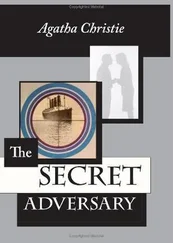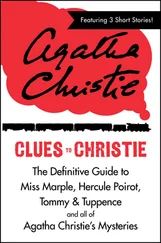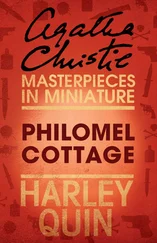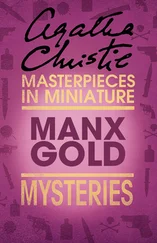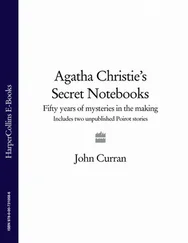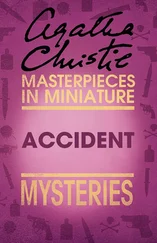Again, at no point in the notes for her last devastating surprise, Endless Night (see Chapter 12), is there mention of the narrator-killer. It was not a case of thinking ‘I’ll try the Ackroyd trick again but this time with a working-class narrator. And I’ll begin with the meeting and courtship, which is all part of the plot, rather than after the marriage.’ Indeed, there is brief mention in Notebook 50 of one of the characters being a friend of Poirot, who was, presumably, to investigate the case; and at only one point is there mention of telling the story in the first person. The inspiration for the shock ending came to her as she plotted rather than the other way round.
Arguably the last of the ingeniously clued detective novels, A Murder is Announced (see Chapter 5), would seem to allow of only one solution, and yet at one stage Letitia Blacklock is pencilled in as the second victim of Mitzi, who has already murdered her own husband Rudi Sherz. It was not a case of deciding to write a novel featuring a supposed victim actually murdering her blackmailer during a carefully devised game. Nor did Murder in Mesopotamia (see Chapter 8) begin life featuring a wife-killing husband with a perfect alibi; she also considered Miss Johnston and, in fact, Mrs Leidner herself was a strong contender for the role of killer for much of the plotting. The setting, the archaeological dig, would seem to have been the fixed idea for this novel and the rest of the plot was woven around it rather than vice versa.
Although this still seems surprising, it is in keeping with her general method of working. Her strengths lay in her unfettered mental fertility and her lack of system. Her initial inspiration could be as vague as a gypsy’s curse ( Endless Night ), an archaeological dig ( Murder in Mesopotamia ) or a newspaper advertisement ( A Murder is Announced ). After that, she let her not inconsiderable imagination have free rein with the idea and hey, presto! a year later the latest Christie appeared on the bookshelves. And some of the ideas that did not make it into that masterpiece might well surface in the one to be published the following year—or ten years hence.
We now have a clearer idea of Christie’s approach to the construction of her stories. Using the Notebooks as a combination of sounding board and literary sketchpad, she devised and developed; she selected and rejected; she sharpened and polished; she revisited and recycled. And, as I hope to show by a more detailed analysis in the following chapters, out of this seeming chaos she produced a unique and immortal body of work.
Exhibit B: Other Crime Writers in the Notebooks
‘Do you like detective stories. I do. I read them all and I’ve got autographs from Dorothy Sayers and Agatha Christie and Dickson Carr and H. C. Bailey.’
The Body in the Library, Chapter 6
Apart from the ‘13 at Dinner’ list in Notebook 41, Agatha Christie makes various references to her fellow crime writers throughout the Notebooks. The following is a selection of those mentioned:
 E.C. Bentley
E.C. Bentley
Apart from his appearance in connection with the Detection Club, he is also referred to in Notebook 41. The following concerns a contribution to Bentley’s anthology A Second Century of Detective Stories, published in 1938, where ‘The Case of the Distressed Lady’ from Partners in Crime represents Christie; she did not write a story specifically for inclusion.
A HP story for Bentley
 G.K. Chesterton
G.K. Chesterton
The creator of Father Brown, the immortal priest detective, and first president of the Detection Club, Chesterton contributed to their collaborative novel The Floating Admiral. The reference in Notebook 66 is a reminder to provide a short story for him, presumably for his 1935 anthology A Century of Detective Stories. She did not write a new one but instead provided ‘Sing a Song of Sixpence’.
Ideas for G.K.C.
 John Creasey
John Creasey
In Notebook 52 there are two references, both very similar, to John Creasey, British crime writer of almost 600 books. Hugely prolific under a variety of pseudonyms, he was also a founder of the Crime Writers Association. In The Clocks, the typewriting agency, which is the focus of much of the novel, does some work for Creasey-like authors. He did not write detective fiction.
Miss M[artindale] is chief agent—Sec[retary] to Creasey—who wrote spy stories
 Rufus King
Rufus King
Twice in Notebook 35, during the plotting of Mrs McGinty’s Dead, Christie mentions Murder by Latitude, the title of a novel by this largely forgotten writer, although his name itself does not appear. Murder by Latitude features a typical Christie setting, aboard a ship from which contact with land has been severed. There are a few King titles in the library at Greenway House.
Atmosphere like Murder by Latitude—some people—amongst them a Murderer
 A.E.W. Mason
A.E.W. Mason
Mason was the creator of Inspector Hanaud. The reference in Notebook 35 is to At the Villa Rose, published in 1910, a case involving the death of an elderly woman and the suspicion surrounding her companion. While plotting One, Two, Buckle my Shoe Christie reminds herself of it:
A murder discovered (woman? Elderly? Like Villa Rose) Clue—a shoe buckle
 Edgar Allan Poe
Edgar Allan Poe
The ‘inventor’ of the detective story when he published ‘The Murders in the Rue Morgue’ in 1841, ‘The Purloined Letter’ is another famous case for his detective Auguste Dupin, turning on the idea of hiding in plain sight. Christie’s reference is in connection with a fortune hidden not in but on an envelope—as stamps. She used this plot device in the short story ‘Strange Jest’ and also much later, in Spider’s Web. The concept of hiding in plain sight is also used in ‘The Nemean Lion’.
Stamps—fortune left in them—on old letters in desk—‘Purloined Letter’ mentioned—they look in obvious envelope—really stamps on it
 Dorothy L. Sayers
Dorothy L. Sayers
Sayers’ creation Lord Peter Wimsey made his debut in 1923 in Whose Body. In addition to the writer herself, Wimsey is mentioned in Notebook 41—this time in a reference to Ronnie West in Lord Edgware Dies. It is also possible that the naming of Dr Peter Lord in Sad Cypress is homage to Christie’s great contemporary.
Ronnie West (debonair Peter Wimseyish)
4
Cat among the Pigeons:
The Nursery Rhyme Murders
‘I adore nursery rhymes, don’t you? Always so tragic and macabre. That’s why children like them.’
The Mousetrap, I, i
SOLUTIONS REVEALED
Crooked House • Five Little Pigs • ‘Four and Twenty Blackbirds’ • Hickory Dickory Dock • ‘How Does Your Garden Grow?’ • Ordeal by Innocence • A Pocket Full of Rye • ‘Sing a Song of Sixpence’ • Ten Little Niggers • ‘The Tuesday Night Club’
The attraction of children’s literature, either as titles or themes, has often provided crime writers with inspiration. Dickson Carr’s The Arabian Nights Murder, Douglas Browne’s The Looking Glass Murders, McBain’s Snow White and Rose Red and Rumpelstiltskin, Queen’s There Was an Old Woman, Smith’s This Is the House, Witting’s There Was a Crooked Man and Fuller’s With My Little Eye are all drawn from the playroom, while S.S. Van Dine’s The Bishop Murder Case uses Mother Goose as a theme. The attraction is obvious—the juxtaposition of the childlike and the chilling, the twisting of the mundane into the macabre.
Читать дальше
Конец ознакомительного отрывка
Купить книгу
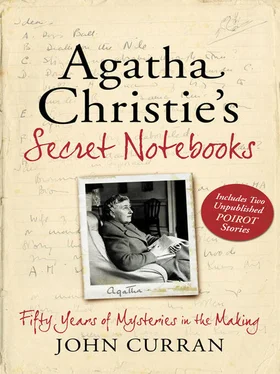
 E.C. Bentley
E.C. Bentley
